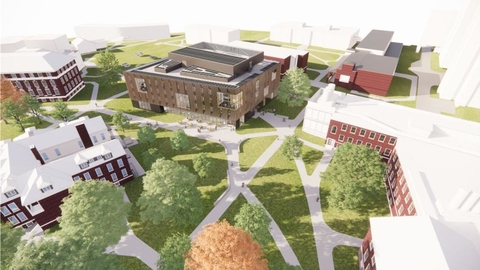SEL Building Design Wins Grand Prize in Embodied Carbon Reduction Challenge
The building design for the Sustainable Engineering Laboratories(SEL) recently won the grand prize in the New Constructions category of the Embodied Carbon Reduction Challenge, a collaboration between the Massachusetts Clean Energy Center (MassCEC) and Built Environment Plus (BE+) aimed at promoting the reduction of carbon in building projects across the state.
Designed by Boston-based architectural design firm Payette and scheduled to open in Fall 2026, the SEL will be an approximately 75,000 square foot facility providing specialized research laboratories and learning spaces to empower interdisciplinary research, serve as a test bed for technologies that address real-world sustainability challenges, and prepare the next generation of engineers.

In addition to promoting sustainable engineering innovation, the SEL will embody it – thanks to sustainable design features, the SEL will be one of the first carbon neutral, geothermal buildings on the UMass campus.
The Challenge’s panel of nine judges made their selections based on embodied carbon reduction, innovation, replicability and cost effectiveness.
“Sustainable Engineering Laboratories is a project that exhibits incredibly impressive reductions in embodied carbon, and, maybe even more importantly, sets an example through its design process that all practitioners in the AEC industry can learn from,” the judges said. “The effort undertaken by the design team to ensure that embodied carbon was tracked and considered at every stage of the design process made SEL truly jump off the page. This was particularly evident in the decisions that do not show up in traditional embodied carbon analysis, such as optimizing the floor area to volume ratio by implementing a skip-stop office level design. The holistic analysis extended to cost implications of critical design decisions to ensure that overall cost did not increase, even with the inclusion of systems like Dowel Laminated Timber that are generally considered to come with extreme cost premiums.”
The winning projects were honored at a reception during the Northeast Embodied Carbon Summit.
This story was originally published by University Relations.
- Grow Investment

